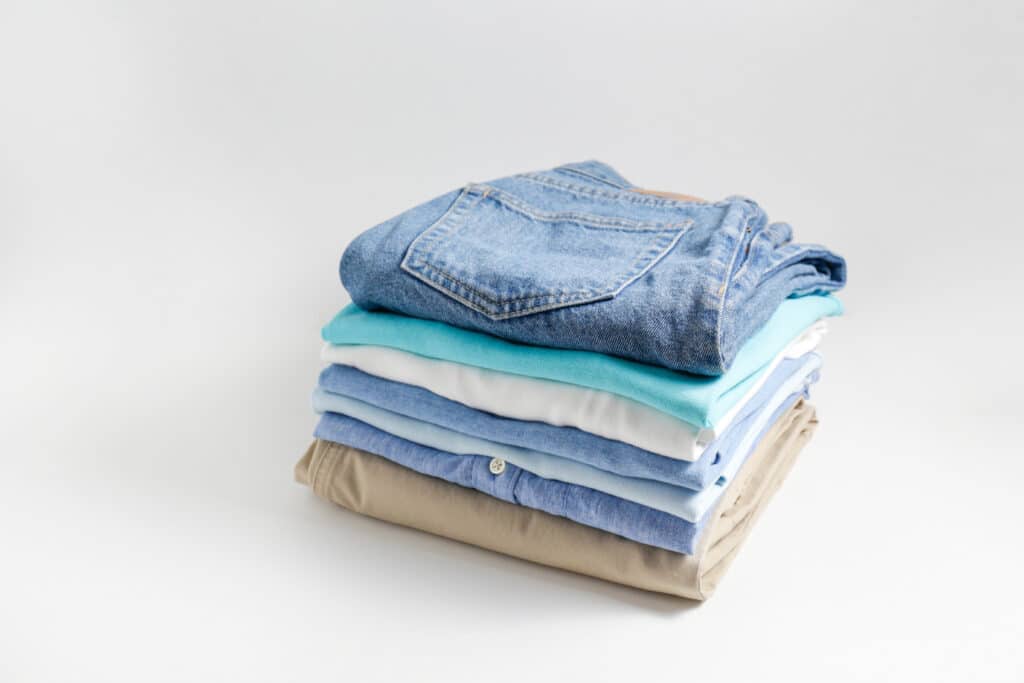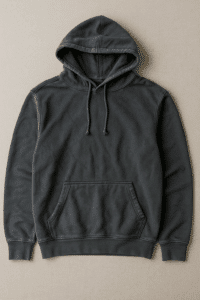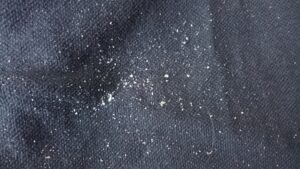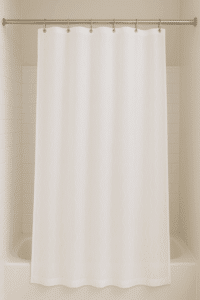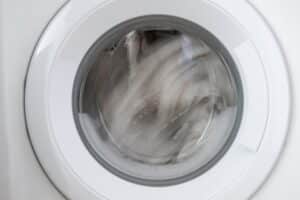Quick Wash vs Normal: Which Cycle Should You Use?
The average U.S. household handles around 7 loads of laundry each week, so any time-saving trick is a welcome relief. One common laundry question we hear is the quick wash vs normal debate – can a speedy cycle really stand up to a full-length wash? We get it; life in Chicago (and everywhere) gets busy, and shaving even 20-30 minutes off a chore can feel like a win. As your laundry-savvy neighbor, we’re here to demystify these washer settings with a friendly, transparent explanation.
Choosing the right cycle isn’t just about pressing the fastest button – it’s about knowing what each setting actually does for your clothes. In this guide, we’ll explain the difference between quick wash and normal wash cycles, including how long they run, what water temperature they use, which fabrics and soil levels they’re best for, and how they impact energy usage. By the end, you’ll know exactly when to use that “Quick Wash” button and when to stick with a normal cycle (while busting a few laundry myths along the way!).
Modern washers offer plenty of cycle settings (we even made a guide to washing machine cycles to explain them all), but “Quick Wash” and “Normal” are two of the most common choices. So what exactly do these cycles do, and when should you use each one? Let’s take a closer look at how they compare.
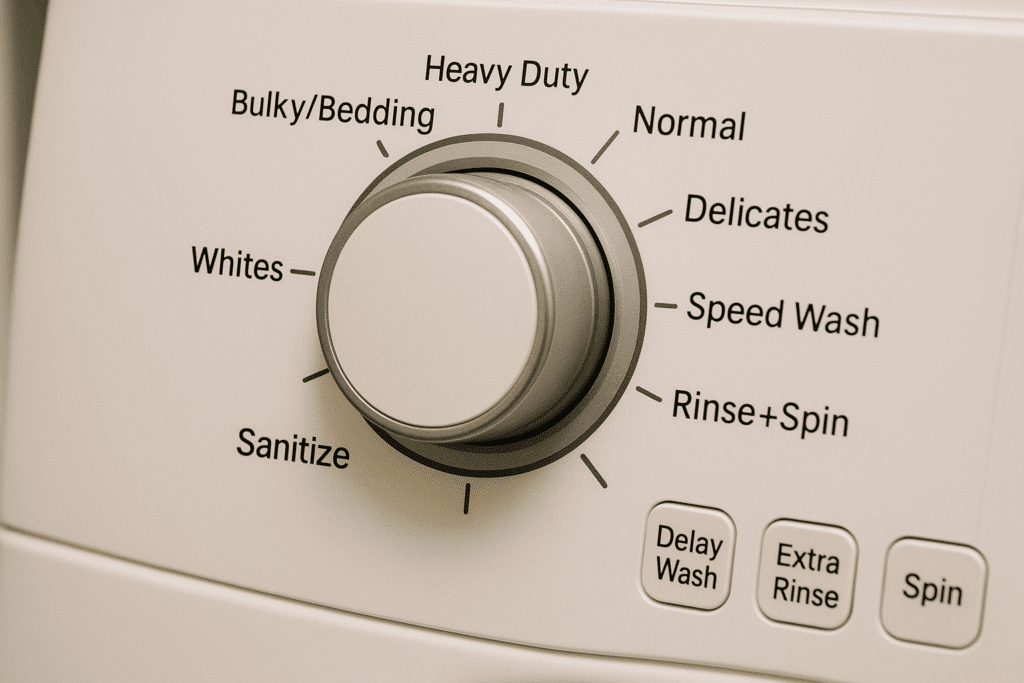
What is a Quick Wash Cycle?
A Quick Wash cycle (sometimes labeled “Speed Wash” or “Express Wash”) is exactly what it sounds like – a faster wash for lightly soiled clothes. It typically finishes in about 15 to 30 minutes, much shorter than the roughly 50–60 minutes of a normal cycle. According to Whirlpool, the Quick Wash uses warm water and a high spin speed to clean a small load (just 2–3 garments) in a pinch. In other words, it’s built for speed when you need an outfit or a few items cleaned ASAP.
This short cycle is best suited for clothes that aren’t very dirty – the kind of items you’ve only worn once or need to freshen up. Good Housekeeping experts note that a quick wash is great for lightly soiled pieces that need a quick refresh (think a shirt you wore for a few hours or guest towels used just one night). It can handle small loads of everyday laundry on the fly, saving you time when you’re in a rush.
However, because the cycle is so fast, it has its limits. You should avoid cramming a full week’s laundry or heavily stained clothes into a Quick Wash – there just isn’t enough time or scrubbing action for a deep clean. Also, Quick Wash cycles often use high agitation and speedy spins, so they’re not ideal for delicate fabrics that require gentle care. Quick washes are fantastic time-savers (and use less water and energy than longer cycles), but be sure to use them wisely for the right items.
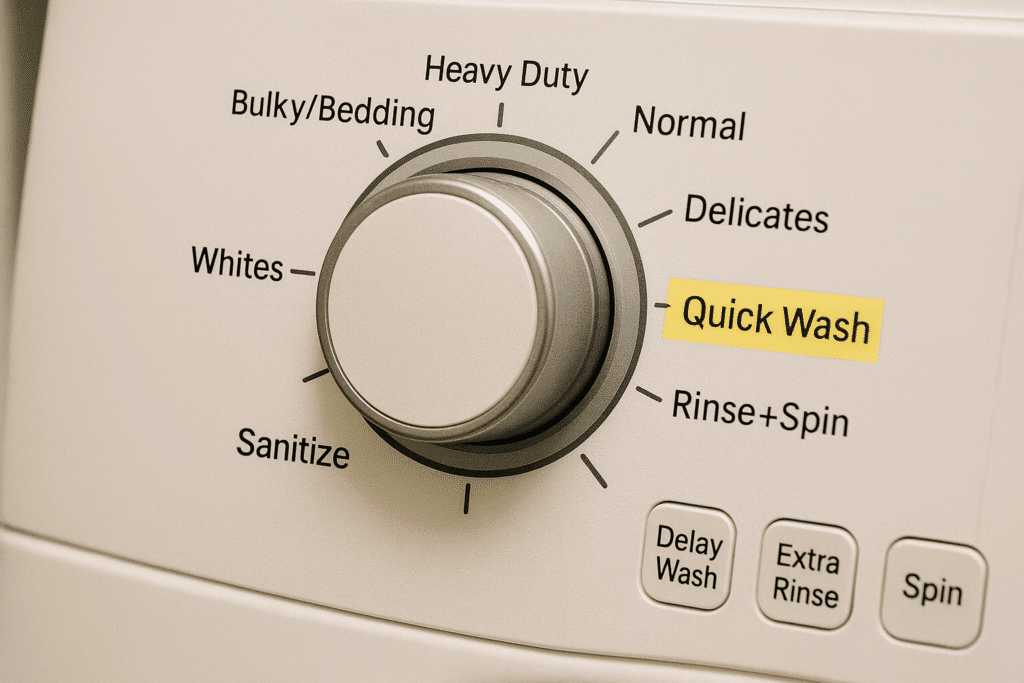
What is a Normal Wash Cycle?
The Normal wash cycle (sometimes called “Regular” or just the default cycle) is the standard setting for most laundry loads. It uses a longer wash time (usually around 50–60 minutes) with robust agitation and a high-speed spin to thoroughly clean a full load of clothes. This cycle typically uses warm water by default (though you can adjust temperature on many machines). In practice, the Normal cycle is a “workhorse” – it’s great for everyday fabrics like cotton, denim, linens, and durable synthetics, handling everything from t-shirts and jeans to bed sheets and towels.
Because it runs longer and gives clothes a good scrubbing, the Normal cycle is ideal for moderately to heavily soiled items – the kind of dirt, sweat, and stains that come from regular wear. You’ll want to use Normal for the bulk of your laundry: think weekly loads of mixed garments, school uniforms, workout gear, socks and underwear, and so on. It’s an efficient, all-purpose cycle that aims to remove typical grime and odors in one go (so you won’t need to re-wash).
While Normal is versatile, it’s not meant for every situation. You’d avoid using Normal on very delicate or embellished fabrics (that’s what the gentle/delicate cycle is for). And for extreme messes or bulky items, even Normal might not cut it – a heavy-duty cycle or extra wash time could be needed. In fact, laundry experts note that most loads are dirtier than we may think, so a normal or even heavy cycle is usually recommended to get clothes truly clean. Overall, the Normal cycle is the dependable choice for day-to-day washing, balancing effective cleaning with a reasonable cycle time.

Quick Wash vs Normal: Key Differences
Let’s compare these two cycles across a few key factors:
- Cycle Length: A Quick Wash cycle generally finishes in about 15–30 minutes, whereas a Normal cycle runs closer to 50–65 minutes (about an hour). Quick Wash gets laundry done faster, while Normal takes longer to ensure a thorough clean.
- Water Temperature: Quick Wash usually uses warm water by default (some machines may use cooler water to save energy). Normal cycles typically run on warm or whatever temperature you select – including hot water if you need a deeper clean for whites or heavily soiled items.
- Load Size & Fabrics: Quick Wash is intended for small loads of lightly soiled clothes. It’s best for items that just need a refresh and can safely handle a faster, high-spin wash. Normal cycles can handle full-sized loads of mixed fabrics and moderate soil. Sturdy everyday fabrics (jeans, tees, towels) do well in Normal. Neither cycle is ideal for delicates – fragile items should go on a delicate cycle instead of Normal’s intense agitation or Quick Wash’s high spin.
- Cleaning Power: Because of its short wash time, Quick Wash provides a basic clean – enough for sweat or light dirt, but it might not remove deep grime or tough stains. The Normal cycle, with its longer wash and rinse phases, delivers a more thorough cleaning. It has more time to lift out soils and distribute detergent, making it better for heavier dirt and persistent odors.
- Energy & Water Use: A Quick Wash uses less water and electricity per load simply because it’s running for a shorter time. (Bonus: if you use cold water on a quick cycle, you save even more energy by not heating the water.) A Normal cycle uses more water and energy since it runs longer and often involves heating water. However, Normal also lets you wash a larger batch of laundry at once. If you have a lot of clothes, one Normal cycle can be more efficient overall than multiple small quick cycles.
In a nutshell, the Quick Wash trades some cleaning intensity for speed and efficiency, whereas the Normal cycle prioritizes a deep, all-around clean over speed. Both have their place – it’s all about matching the cycle to your needs.
When to Use Each Cycle
Quick Wash – Best For:
- Lightly worn or dirty clothing: Use Quick Wash for items that aren’t deeply soiled. For example, a shirt or blouse you wore for only a short time, or workout clothes that just have light sweat, can be cleaned quickly without a full-length cycle.
- Small loads when you’re in a hurry: If you only have a few items you need cleaned fast (say, you need that outfit for tonight), the Quick Wash cycle gets it done much faster than Normal. It’s perfect for last-minute laundry emergencies or when you’re short on time.
- Refreshing clothes or removing mild odors: Quick Wash is handy for freshening up clothes that sat in the washer a bit too long or have a slight musty smell. A short cycle with a bit of extra rinse (if your machine allows) can deodorize these items without the full wash time.
Normal Cycle – Best For:
- Everyday laundry loads: For your regular weekly laundry – a mix of shirts, pants, undergarments, socks, kids’ clothes, etc. – the Normal cycle is the go-to. It can handle a variety of fabrics and typical levels of dirt from day-to-day wear all in one load.
- Heavily soiled or stained items: Whenever clothes have visible dirt, mud, food spills, sweat stains, or odors (think sports uniforms, work clothes, messy kids’ outfits), stick with Normal. The longer wash time and stronger agitation help remove grime that a quick cycle might leave behind.
- Towels, bedding, and linens: Items that need thorough cleaning for hygiene – like bath towels, bed sheets, pillowcases, and kitchen linens – should be washed on Normal. This ensures enough time to eliminate bacteria, body oils, and odors from these thicker or heavily-used fabrics.
- Full-capacity loads: When you have a large load that fills up the washer, Normal is appropriate. It’s designed to handle the washer’s full load capacity and distribute detergent and cleaning action across many items. (In contrast, a quick cycle might struggle if overfilled.)
- Any time you doubt Quick Wash is enough: If you’re unsure whether a short cycle will get the job done, choose Normal. It’s better to run one thorough cycle than have to re-wash clothes because they didn’t come out clean the first time.
Note: For oversized items or loads that don’t fit well in a home machine, you may need a high-capacity washer or special cycle. (For instance, a king-size comforter might require a heavy-duty cycle or a trip to a laundromat.) Our self-service laundry in Chicago offers extra-large machines perfect for those big loads that a standard washer can’t handle.

Addressing Common Misconceptions
- Myth: “Quick Wash” cycles don’t get clothes clean. Reality: When used correctly (small, lightly soiled loads with proper detergent), a Quick Wash can clean clothes effectively. It isn’t less powerful than Normal – it’s just shorter, so it’s not meant for heavy grime. For everyday light dirt or sweat, a quick cycle does the job just fine. (Plus, less time being agitated means less wear and tear on fabrics, so your clothes can last longer.)
- Myth: You should use Quick Wash for every load to save time and energy. Reality: Not quite. Quick Wash is a fantastic time-saver for the right situations, but it’s not a one-size-fits-all solution. Most of your laundry (bigger loads or really dirty items) still benefits from the thorough cleaning of a Normal cycle. Think of Quick Wash as a helpful option for specific needs, not a replacement for your regular wash routine. It’s there to make life easier – not to handle every load.
The Bottom Line: Quick Wash and Normal cycles each serve a purpose in your laundry routine. The Quick Wash is your friend when you need something cleaned fast and it’s only lightly dirty – it saves you time and even a bit of energy. The Normal cycle is your dependable go-to for thorough cleaning of regular or heavier loads, making sure everything comes out truly clean. By choosing the right cycle for the right situation, you’ll get the best results in the least time (and avoid laundry headaches like re-washing).
Finally, remember that you’re not alone in tackling that never-ending pile of clothes. As a Chicago-founded laundromat, we take pride in helping busy neighbors keep their laundry under control. If you ever feel too busy to even run a wash, let us lighten the load: our convenient pickup & delivery service can collect your laundry and return it fresh and folded, or drop off your hamper for a wash & fold and we’ll handle the dirty work for you. With the right wash cycle – and a little help when you need it – laundry day doesn’t have to be a chore!
